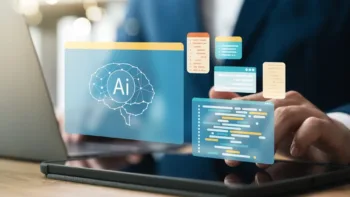
Artificial Intelligence (AI) is transforming the global workforce, with millions of jobs at risk due to automation. Studies indicate that up to 300 million jobs could be displaced by AI by 2030 (World Economic Forum), and 60% of jobs in advanced economies are susceptible to automation. While AI is creating new opportunities, it is also forcing many industries to rethink their employment models.
Industries Losing Workers to AI
While AI is seemingly everywhere these days, certain industries are experiencing higher-than-average displacement. Here are some of the industries hardest hit by the rise of AI in the workforce.
1. Manufacturing
AI-powered robots have revolutionized assembly lines, inspections, and quality control. Companies increasingly rely on robotic arms for tasks such as welding, painting, and assembling vehicles, reducing the need for human labor. AI also plays a role in supply chain optimization and predictive maintenance, further minimizing human oversight (iSixSigma).
2. Customer Service
AI chatbots and virtual assistants are replacing human representatives in call centers. Automated customer support tools can handle inquiries, complaints, and even troubleshooting with greater efficiency. Many businesses are downsizing their customer service teams as AI-driven solutions provide 24/7 availability at a lower cost (iSixSigma).
3. Retail
Self-checkout kiosks, AI-driven inventory management, and automated warehouses are making human retail workers increasingly redundant. Major retailers are implementing computer vision and predictive analytics to monitor store activity, reducing the need for cashiers and stock clerks (iSixSigma).
4. Finance & Banking
The financial sector is seeing a surge in AI-driven automation for loan approvals, fraud detection, and risk assessment. Robo-advisors are replacing human financial planners, and AI-powered trading algorithms are reshaping investment strategies. AI is also automating customer interactions, reducing the need for bank tellers and financial analysts (Exploding Topics).
5. Media & Content Creation
Journalists, copywriters, and even artists are feeling the impact of generative AI tools like ChatGPT and Midjourney. AI can generate news articles, marketing copy, and even music or artwork. While human oversight remains crucial, fewer writers and designers are needed as AI improves in content production (Exploding Topics).
6. Transportation & Logistics
AI-driven autonomous vehicles, drones, and logistics software are reducing the need for human drivers and delivery personnel. Companies like Amazon and Tesla are investing in self-driving technology and AI-powered supply chain management, which could lead to massive job displacement in trucking and delivery services (iSixSigma).
Who Is Most at Risk?
Interestingly, AI is affecting higher-paid jobs at a faster rate. Workers in AI-exposed jobs earn, on average, $13.3 per hour more than those in less affected roles. About 27% of workers with a bachelor’s degree or higher are employed in fields most vulnerable to AI disruption, while only 3% of workers without a high school diploma are in similar positions (Pew Research, Exploding Topics).
The Future of Work
While AI may displace jobs, it’s also safe to say that it’s going to continue to create new ones. The green economy is expected to generate 7 million new jobs through AI-driven innovations. However, retraining and upskilling will be essential for workers to adapt to the evolving job market (World Economic Forum).
AI is here to stay, and industries must navigate the balance between efficiency, cost savings, and workforce adaptation to ensure a sustainable transition.



